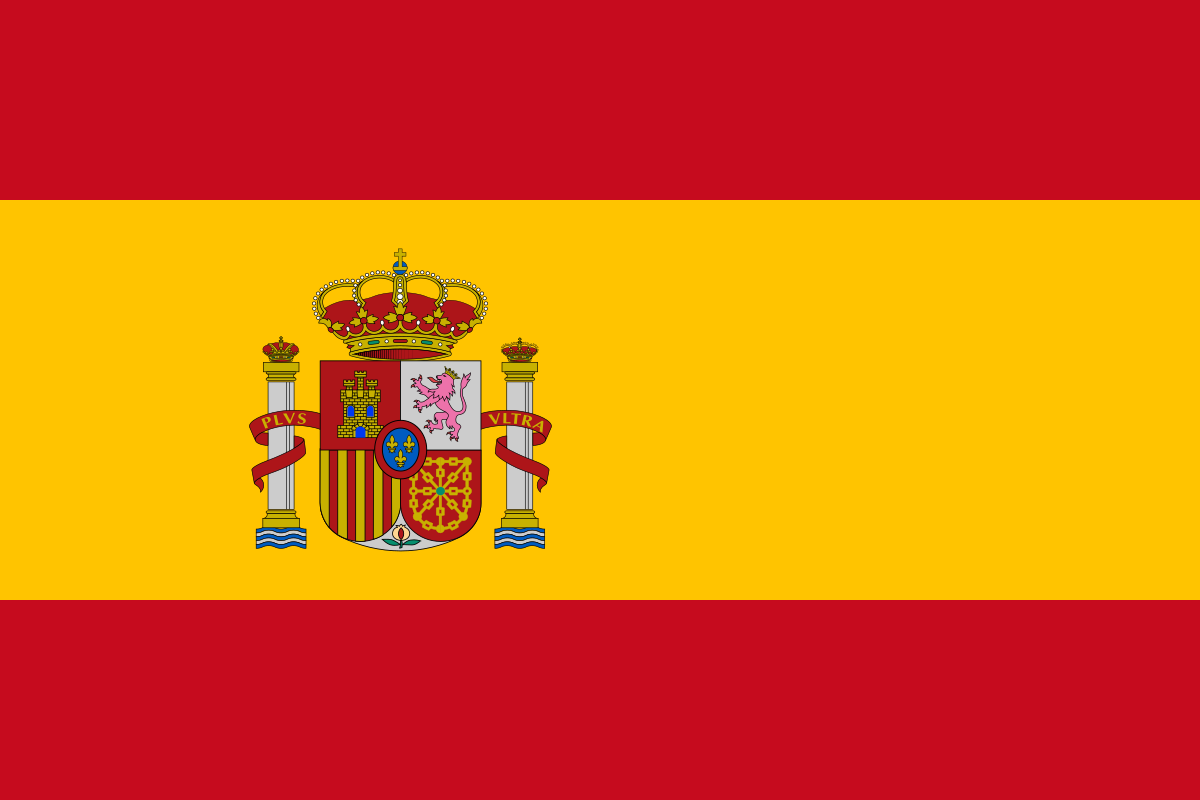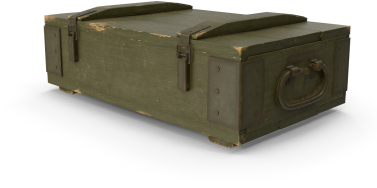The Sotteville château

The Sotteville Château
Located 10.6 miles from Cherbourg, and 61.5 miles from Bayeux, the Sotteville château is a beautiful Norman building, nestled on the outskirts of the small village of Sotteville, where my entire maternal family grew up, with its 477 inhabitants.
As a child, I always wondered what the château hid, without knowing that one day, I would have the opportunity to walk through its doors and discover its unique story. That of a castle that has survived the centuries, the venue of Field Marshal Erwin Rommel, the German Occupation and the liberation by the Allied, during the Second World War.
We will attempt to uncover some of the mysteries of this beautiful building, told by its owners.
History of the castle
The history of the ‘Château de Sotteville’, at least as far as we know, dates back to the 14th century. At that time, the castle belonged to the La Haye Sotteville family.
As with all stories of kings, queens and knights, in the absence of a male heir, the property passes into the family by marriage. And so, when Anne de La Haye married Ferrand Le Marchand on February 5th, 1475, she bequeathed the château to the Le Marchand family.
On March 6th, 1490, he sold the property to Jean Durevie, a bourgeois from Valognes, who was ennobled in 1518.
It was his descendants who built the château as we know it today.
In fact, nothing remains of the original medieval castle, with its drawbridge and moat. Today, we have a 16th-century building, built between 1593 and 1610, which has evolved over the eras, according to the whims of its owners.
Let’s move forward in time, to 1700, when Anne Durevie, marrying a Mr. de Beaudrap, once again passed the château into the hands of another family, who held it until 1923.
That year, Mrs. de Beaudrap sold it, because her husband, Henri de Beaudrap, doctor, mayor of Sotteville and general councilor, was indebted. He left his castle, his financial problems, his wife and their four children in 1919, escaping to Paris, where he had other children with an Alsacian woman.!

Henri de Beaudrap and his wife
Later, he moved to Marseille, where he built a new life. He married another woman there, after Mrs. De Beaudrap, still living in the village of Sotteville, had passed away.
The château was bought in 1923 by Marcel Grillard, owner of the famous dairy in the small Norman village of Sottevast. Unfortunately, he quickly sold the castle, taking away with him the furniture and the beautiful chimney.
The Barrault sisters were after that the new owners of the beautiful building. Both married the David brothers, and lived a crazy life into the château, where lots of parties were organized at that time.
In 1933, they sold the château to Colonel Fromageot, a retired Colonel from the French Artillery. He and his wife lived in Sotteville, before Colonel Fromageot, scared of the arrival of the German soldiers, escaped on June 16th, 1940, reaching the coastal town of Carteret. From there, he was to join the British Island of Jersey. However, in the end, he never left the region.
Fromageot left behind a château while fleeing, and above all, precious confidential plans of the city of Cherbourg… Indeed, once retired, the former Colonel saw himself rewarded with maps, representing the defenses of the deep-sea harbor in Cherbourg.
Rommel at the Sotteville Château
Those plans of Cherbourg, hidden into Fromageot’s drawer in the château, enabled Field-Marshal Erwin Rommel to make strategic choices to reach the Norman town in 1940…
Indeed, being in Normandy with the aim of controlling and occupying Cherbourg and the whole of Normandy, the German Officer was now close to his objective, 9 miles south-west of Cherbourg, at Sotteville, on June 18th, 1940.
In his writings, he explains: “On hearing that the divisional staff had arrived in Sotteville, I decided to conduct further operations from there. We drove off soon after, keeping 300 yards spacing between vehicles because of the enemy shell-fire. Driving at top speed, we succeeded in getting our few vehicles back along the road to the Divisional H.Q. at Château Sotteville without loss”. The Rommel Papers, B.H. Liddell-Hart, p.77
We also understand that Rommel, not having slept the night before, took a nap in the castle - “Not having had any sleep since the previous morning, I took an hour’s rest at about 17:00 hours”. The Rommel Papers, B.H. Liddell-Hart, p.78 – before continuing to plan his advance on Cherbourg.
The plan was to attack Querqueville first, and thus control Cherbourg easily. To control the place; the objective was to go thru the small village of Tonneville. Plan, which was cancelled at the last minute, after having analyzed the maps of Colonel Fromageot… Here we can read in Rommel’s memoirs:
“Shortly after the commanders had gone, a number of highly important maps were brought in, to which I gave immediate and careful study. It seemed that the château in which we had taken up our quarters belonged to the Commandant1, and a whole collection of maps of the Cherbourg fortifications had been found in his secret drawers. They included maps of the defended zone south of Cherbourg and, above all, one map showing the zones of fire of all the light and heavy batteries in and around the fortress. I studied this map very carefully and came to the conclusion that it would be unwise to proceed with the attack through Tonneville, for which orders has just been issued, as the enemy would be able to cover it with the combined fire of several fort.” – The Rommel Papers, B.H. Liddell-Hart, p.78
Note: The Commandant mentioned here is in fact Colonel Fromageot.
It is not said in his writings which village Rommel decided to cross instead of Tonneville, but those maps did have a considerable impact on the capture of Cherbourg!
Rommel stayed the night in the château, as we can read “It was midnight by the time I arrived back at Divisional H.Q.,…” The Rommel Papers, B.H. Liddell-Hart - p.79, before continuing advancing toward Cherbourg, leaving around 0600am on June 19th, 1940.
Relief
After Rommel and his men left, a part of the Sotteville château was occupied by families of refugees from Cherbourg (among them, the Blimer sisters, professors of piano in Cherbourg).
In 1942, Marie Joseph Couraye du Parc, living in Valognes, had to face her father’s loss. She used her heritage to invest in stone. It was before the war, on a walk, that she saw this château, which she decided to buy years later, in order to place her money. She moved in and shared it later with Jean Jacques de la Huppe de Larturière, whom she married on May 27th, 1943.
They lived in the château with all the refugees. Some of them became their really close friends, as Mr. Hamel, journalist at the “Presse de la Manche” journal.
The château de Sotteville during the Occupation
Unfortunately, the calm was not to last… Indeed, the château was apparently spotted previously, in particular during the few hours Rommel spent there. As it was closed to Cherbourg, but hidden in the woods, it presented a strategic position for the German soldiers.
Therefore, from October 1943, the château became the Command Post of the 1262nd German Coastal Artillery Regiment, ‘Heeresküstenartillerie-Regiment 1262’, under the command of Major Hubert Otte.
An interesting point to mention is that, contrarily to what we can think in the collective imaginary, the German soldiers only lived and/or slept in the batteries/ strongholds/ fortifications of the Atlantic Wall in case of emergency.
They were doing shifts, living most of the time in the surrounding local houses.
Here, approximately 125 German and Italian soldiers occupied the place in total. They were sleeping in small barracks in the courtyard whereas the officers had their room in the castle.

The Sotteville Château's courtyard
As for the French couple, they lived on the ground floor, constituted of three different rooms, while the German officers occupied the rest of the château.
In December 1943, the highest ranked officer2 invited the Delarturière little family to celebrate Christmas with them upstairs. Fortunately, the invitation was made a few days before Christmas. Mrs. Delarturière pretended that the couple always used to spend the celebrations at her sister’s home, to the Château d’Omonville, in Denneville.
Note: Probably Major Hubert Otte
Therefore, they left the château, riding their bikes, to join Denneville, located 20.5 miles from Sotteville.
This would hurt the Germans soldiers. Unfortunately, when the couple came back to the château, they could not find their three rooms on the ground floor of the property: they were stopped at the entrance and told not to come back.
Therefore, they lived in the Château d’Omonville for a while, before taking refuge in Carteret, to the Escoffier (Laure Delarturière Spelling) hotel. Here, living conditions were very difficult: there were Russian corpses in the basements. They were said to have died of typhus.
The Allied Invasion
When the German soldiers left the château, the plan was to burn it. Indeed, at the end, the archives of the Cherbourg Kommandantur were stocked here, so it was necessary to turn everything into dust…
When Marie and Jean Delarturière came back to the château, there was hay and wood in front of the doors and behind the windows of the ground floor. One spark and the whole house would have perished into the flames…
The château was ready to be burned down but it did not…
Thanks to one man: Major Hubert Otte. It seems that this General really liked this château and wanted to save it (and himself).
The people living in the neighboring farm saw the soldiers living the château in an abnormal state on that day… We suppose that he made his soldiers drink, telling them to leave first, and that he would handle the fire himself.
In reality, he did not. The neighbor, Mrs. Durevie, who bore the same surname as the château’s former owners, saw Major Otte enter the “stable” (name given to the small chapel next to the château, now used to store the owners’ gardening tools) and leave in civilian clothes, leaving the château for good!
After probably deserting on that day, it seems that Otte was later hospitalized in Cherbourg after an accident.
The Norman couple found his uniform, well folded, inside the chapel. Marie Delarturière used the fabric to sew a coat, and the buttons were used after the war, to repair her daughters’ cardigans.

Buttons from Major Otte's uniform
On mid-June, 1944, the Allied arrived in the château, certainly part of the 9th Infantry Division. They stayed very briefly, as they had to continue their advance toward Cherbourg. At that point, the Delarturière family were not living there permanently yet.
When they moved back, French soldiers occupied the château, for almost two long years. Now back to Sotteville, the couple struggled to get along with the new occupants, especially the general, described as terrorising his soldiers and the civilians living in the château, were always drunk, dirty, and difficult to support. For months, Jean Delarturière wrote to the French authorities, to have his château back, as cohabitation became difficult...
So what remains of the Sotteville Château today?
Marie gave birth to three daughters: Laure, Rose and Arlette. The Château de Sotteville is now inhabited by Rose and Laure Delarturière, who beautifully keep the memory of this château alive, and with it, France’s monumental heritage, its stones still bearing the marks of the past.

The Salon of the Sotteville Château
Walking into the Salon, if you raise your head to look at the ceiling, you can see a large crack. This dates back to 1943, when a bomb fell behind the château, shattering the windows and raising the ceiling a few centimeters.

Crack on the ceiling, in the Salon, caused by the bombings in 1943
.jpg?width=2048&height=1536&name=The%20library%20(3).jpg)
The library
Crossing the Salon, we now reach the white library, exuding peacefulness, from which we can observe Laure’s eighty or so ducks wading in the pond. When the German officers occupied the château, they painted everything in the room in black. Jean Delarturière kept the inside of one door preserved, as a reminder of what the château and its inhabitants had experienced at the time.
.jpg?width=1536&height=2048&name=The%20library%20(1).jpg)
Black painting in the library

Lieutenant Werner Lobback and Ericka Lobback's wedding invitation
Propaganda cards, a soldier’s wedding announcement for Easter 1944, between the German Lieutenant Werner Lobback and Ericka Lobback, photographs of American soldiers who (or their families) later returned to the château, and the buttons from Major Otte’s uniform, now preserved in a small box... all remain from this period.
.jpg?width=1480&height=2048&name=German%20propaganda%20(2).jpg)
German propaganda, found in the Château

Picture of an American soldier with his daughter, who liberated the château in June 1944
Last but not least, the red frames of the windows are further evidence of the German Occupation. In fact, the Germans had covered it with drain oil, which was impossible for the owners to camouflage after the war. The only paint that could cover the mixture was red paint, hence the choice of color for the windows, ultimately out of spite.
I am now taking time to observe each detail one last time, before finally closing the heavy doors of the château, along with its secrets, which I know still hold so many others, which it will be up to the future to unravel.
I would like to thank once again the Delarturière sisters, whom fate has brought us together again, for their welcome, knowledge and amazing stories shared. And to my grandfather, to whom I tragically owe this first sad, but then cheerful reunion.
Written by Lisa MARIE

















